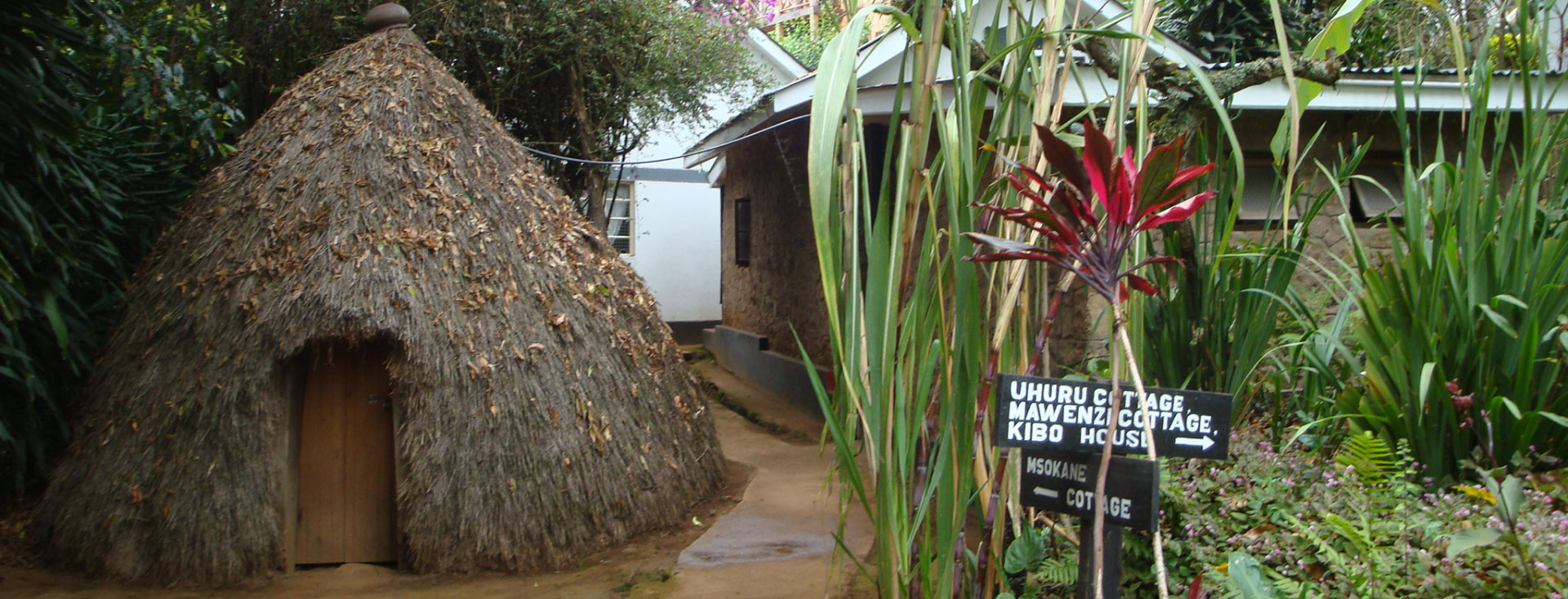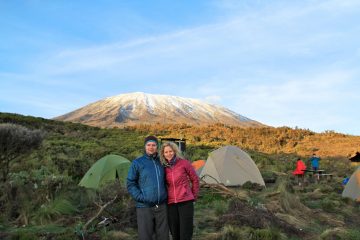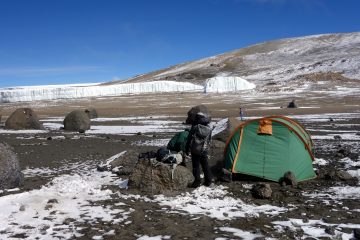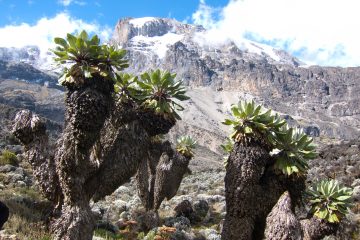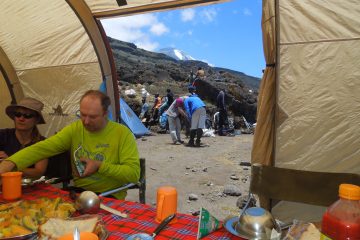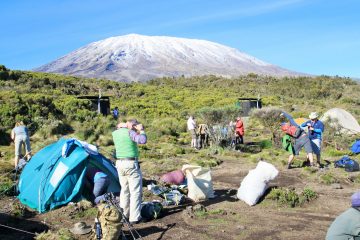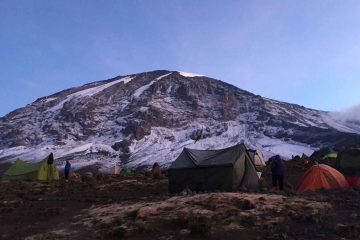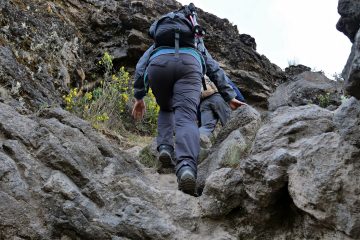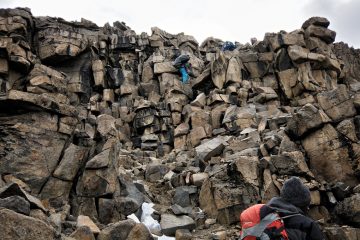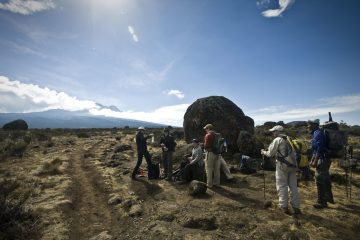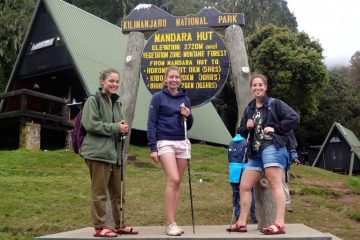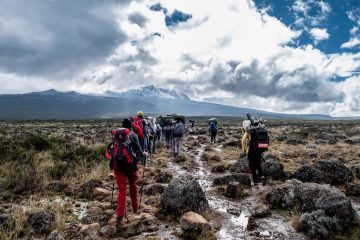The Chagga people, who historically inhabited Mount Kilimanjaro’s southern and eastern slopes, are the third-largest tribe in Tanzania, a country that is a very diversified nation with more than 120 distinct ethnic groups, and each ethnic group makes a distinctive contribution to society.
The Chagga are made up of over 400 distinct clans that were commanded by mangis (chiefs), and although though the Mangi Mkuu (chief of all chiefs), who once oversaw daily affairs for the Chagga, no longer does so, he is still revered by everybody.
The people and inhabitants, native to the area around Mount Kilimanjaro and on the foot slopes of the Mountain are predominantly the Chagga people that speak the Chagga language or dialect. Tanzania is a Swahili-speaking country but the Chagga use this language as their mother tongue.
The Chagga Tribe that cultivates on the foot slopes of Mount Kilimanjaro
Agriculture has always been the main source of income for the Chagga people, and it continues to play a significant role in both their economics and culture today. The most typical crops grown there are finger millet, bananas, coffee, maize, and beans.
This grain, which is also known as red millet, is primarily used to make the local alcoholic beverage Mbege. Bananas are prepared for this purpose in a pot, then let to ferment outside. The mixture is filtered after around 4 to 5 days. Now, water and a porridge made from finger millet flour are added. After that, it must remain outside for another day before the end product can be consumed.
However, since the Mbege is customarily shared, which fosters a sense of community, not everyone will have their own cup. That is why it is such a vital component of Chagga culture.
The Chagga cuisine includes a fair quantity of meat, but it also includes a lot of fruits and vegetables, including bananas, maize, and beans. Many Chagga live to be over 100 years old, and perhaps one of the causes of this is their nutrition.
Almost all Chagga people speak Kiswahili, Tanzania’s official language, in addition to their own language (Kichagga), which has several dialects spoken in different regions.
Cowhide was used for their traditional apparel, but as a result of contact with the outside world, clothing has evolved. Many Chagga women now wear vibrant khangas and kitenges.
The Chagga people have a reputation for being educated and ambitious, and now they are regarded as being skilled businessmen.
Their considerable wealth is not just attributable to Mount Kilimanjaro’s fertile soils and its favorable environment. Additionally, they were among the first ethnic groups in Tanzania to adopt Christianity and, as a result, acquire Western education.
The Chagga people so contribute to the fabric of Tanzanian society from the foothills of the highest mountain in Africa to the companies and towns.
History of the Chagga Clans
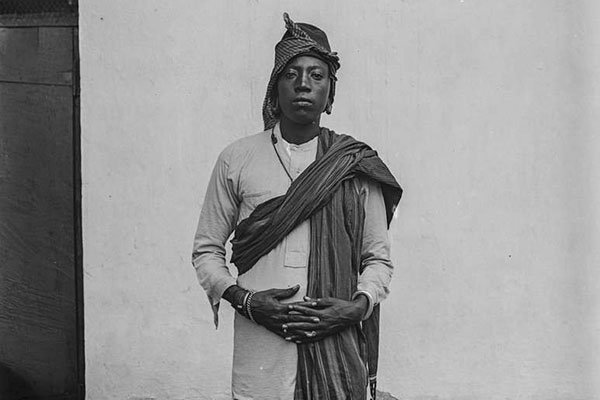 The Chagga people of Moshi and Kilimanjaro have lived in the vicinity of the mountain for ages. The Chagga might be one tribe but subdivided into many clans. These clans were categorized under different chiefdoms.
The Chagga people of Moshi and Kilimanjaro have lived in the vicinity of the mountain for ages. The Chagga might be one tribe but subdivided into many clans. These clans were categorized under different chiefdoms.
Long ago, these clans weren’t as unified as their modern-day descendants. They even went into a civil war amongst clans. The Chagga clans are known as mitaa in their local language
Each clan had a clear-marked territory to protect along the southern and eastern sides on the foot of Mount Kilimanjaro. The territory boundaries were marked by rock outcrops, valleys and rivers.
The modern-day Chagga are a united tribe but in the olden days, each of the 15 clans fought for rights to take control of either side of the slopes of the mountain.
From the south-west of Mount Kilimanjaro, which marked the Kibongoto territory, there existed 15 territories subdivided on the slopes of the mountain extending but with limits to the boundary on the northeast of Mount Kilimanjaro which belonged to the Usseri clan
Only the Mamba of all the Chagga clans owned expansive land extending from the forest line up to the plains that engulfed the foot of Mount Kilimanjaro. Mamba Clan’s land did not stretch beyond the slopes and the whole mountain had visible makings of footprints belonging to some big five animals like buffalos and elephants
Three main cascading footpaths connected the territories, each at a different elevation level. The footpath crossing at the center was almost always well maintained and offered better convenience.
Despite the good form of the path, it was a risky choice as it led directly to the heart of the chiefdom belonging to the respective Chagga clan. Many chose that path and were never seen or heard of ever again, especially during clan disputes.
But the upper and lower paths were frequented by members of clans and other people; peace was never a guarantee between various chiefdoms of the Chagga tribe of Mount Kilimanjaro.
Related: The Kikuyu tribe of Mount Kenya
Chagga Chiefs
Chagga chiefs were revered by their people and held immense power and authority in their hands, both within the borders of their own territories and in the other territories whether there were coalitions or bad relations. Interclan wars were mean to conquer and regain territories and land alike. Everyone from other clans needed special permission to pass through other lands belonging to the opposite Chagga chiefs.
Even the first westerner to discover Mount Kilimanjaro had to seek permission from the Chagga chiefs. His name was Johannes Rebmann.
Where do the Chagga people live?
The Chagga people, also known as Chaga, Waschagga, Jagga, or Dschagga, reside on the southern slopes of Mt. Kilimanjaro, Africa’s tallest peak. Administratively, the region is located in northern Tanzania, south of the Kenyan border, in the Kilimanjaro region. Three districts—Hai in the west, Rombo in the east, and Vunjo in the center—are further separated into the area.
The Chagga people historically belonged to many clan groupings commanded by Mangis (chiefs). Clan names like Moshi, Swai, Marealle, Lyimo, and Mrema are a few examples. As a result, the region was split up into several chiefdoms. The chiefs were well renowned for fighting one other and occasionally forming coalitions in their drive for dominance. As a result, the number of chiefdoms decreased over time.
Machame, Kibosho, Mamba, Mwika, Kibongoto, Uru, Usseri, Kirua Vunjo, Mkuu, Marangu, Mashati, Arusha Chini, Masama, Kahe, Old Moshi, Kilema, and Keni-Mriti-Mwengwe were among the 17 chiefdoms that existed by 1968. The chiefdoms were further split up into smaller groups known as mitaa.
Other ethnic tribes neighbouring the Chagga people
Compared to other tribes in Tanzania, the Chaga have distinctive traditions.
The Chaga language was preserved in new villages thanks to the Chaga’s success at farming the highlands. These settlements were first constructed as villages along mountain hills. This technique is said to have been passed down through the Kaskazi and Upland Bantu branches of their genealogy.
Boys who were circumcised by the Chaga were also introduced into age groups that were characteristic of the ancient Bantu type.
At the same time, they adopted the practice of female clitoridectomy from the Southern Cushitic branch of their genealogy, which they abandoned when converting to Christianity or Islam.
The Pare and Taita people of neighbouring Kenya
The main iron suppliers to the Chaga had been the Pare, Taveta, and Taita peoples. Military rivalry among the Chaga monarchs led to a spike in iron demand at the start of the nineteenth century. The growth of long-distance commerce from the coast to the interior of the Pangani River basin is likely related to this rivalry, indicating that the Chaga’s interactions with the coast may have started around the end of the eighteenth century. As viewed and interpreted by European colonizers, the Chaga rivalry was characterized by raids and counterraids.
The Ongamo.
Long before the year 1600, the Chaga began to engage with the Nilotic Ongamo, who at one point dominated a large portion of the Kilimanjaro region.
The Chaga civilization was greatly influenced by the Ongamo. The drinking of cow blood, age sets, and female circumcision are only a few of the customs they appropriated from them. The Ongamo had become more and more Chaga by the second part of the nineteenth century. The Chaga concept of a creator god and the Ongamo concept of the life-giving sun were combined to create the Chaga god “Ruwa.”
List of famous/popular Chagga people from Tanzania
Below is a list of influential Chagga people from Tanzania combining famous members from politicians to intellects, entertainers, artists, and sportsmen, and women.
Politicians
- Lucy Lameck – Tanganyika African National Union
- Asanterabi Zephaniah Nsilo Swai – Tanganyika African National Union
- Edwin Mtei – CHADEMA Founder
- Augustine Mrema – TLP & CCM
- James Mbatia – NCCR-MAGEUZI
- Godbless Lema-CHADEMA
- Freeman Mbowe – CHADEMA
- Basil Mramba – CCM
- Adolf Mkenda – CCM
Academics and writers
- Nathaniel Mtui, First Chaga historian and first Tanzanian published historian.
- Leonard Shayo, Tanzanian mathematician and former presidential candidate
- Irene Tarimo, Tanzanian academic lecturer, researcher, biologist and env. scientist
- Adolf Mkenda, Tanzanina academic professor and politician CCM’s MP
- Elizabeth Mrema,Tanzanian Biodiversity leader and attorney
- Fausta Shakiwa Mosha, Tanzanian Scientist
- Khalila Mbowe, Tanzanian choreographer
- Doreen Kessy, Tanzanian author and educator
- Frannie Leautier, Tanzania civil engineer and academic
- Optat Herman: a professor of economics at Rhode Island University. One of Tanzania’s most renowned academician and economist
Statespeople
- Helen Kijo-Bisimba, Tanzanian human rights activist
- John Mrosso, Tanzanian Judge
- Robert Kisanga, Tanzanian Judge
Businesspeople
- Reginald Mengi – Tanzanian business tycoon and multi-millionaire.
- Michael Shirima, Tanzanian business owner.
- Patrick E. Ngowi, Tanzanian business owner.
Sportspeople
- Leodgar Tenga – Tanzanian Football player (Former President of Tanzania Football Federation)
- Farid Musa – Tanzanian Football player
- Bruno Tarimo – Tanzanian boxer
- Haruna Moshi – Tanzanian footballer
- Hassan Kessy – Tanzanian footballer
- Amani Kyata – Tanzanian footballer
- Magdalena Moshi – Tanzanian Olympic swimmer
- William Lyimo – Tanzanian boxer
- Wilfred Moshi – First Tanzanian to summit Mount Everest[13]
Entertainers and artists
- Master J, Tanzanian music producer
- Bill Nass, Tanzanian musician
- Joh Makini, Tanzanian iconic rapper
- Elizabeth Michael Lulu- Tanzanian actress
- Jacqueline Wolper, Tanzanian actress
- Hoyce Temu, Tanzanian beauty pageant winner
- Rosa Ree (rapper), Tanzanian female rapper
- Amani Temba, Tanzanian musician
- Sheria Ngowi, Tanzanian fashion designer
- Maua Sama, Tanzanian musician
- Mr Nice, Tanzanian musician
- Whozu, Tanzanian musician and comedian
- Aika Marealle, Navy Kenzo Tanzanian singer and songwriter
- Ben Kinyaiya, Tanzanian actor, presenter and musician
- Scola kissanga, Tanzanian radio and Tv Presenter
- Barnaba Classic, Tanzanian singer and songwriter
- Nikki wa Pili , Tanzanian rapper and District commissioner (Kisarawe district)
- Elizabeth Mramba, News Anchor, Journalist – TBC.
Modern Day Chagga people
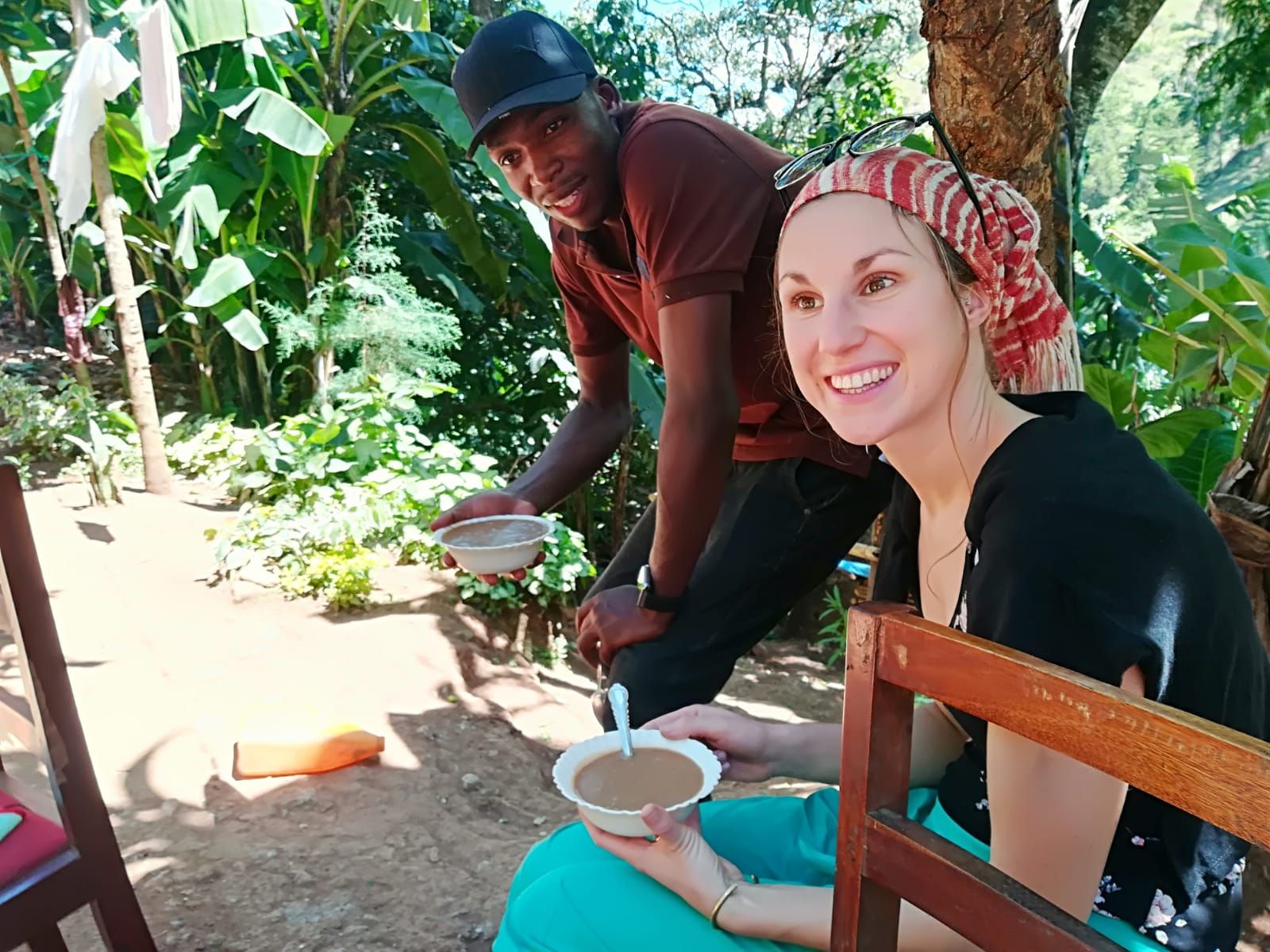 In this era, the Chagga have put away their past differences and are a unified unit. Many things have changed and the clans have come together to form the modern-day Chagga tribe. Apart from the Chaggas, different people from different parts of Tanzania and even abroad live together in harmony and even different tribes work on the mountain.
In this era, the Chagga have put away their past differences and are a unified unit. Many things have changed and the clans have come together to form the modern-day Chagga tribe. Apart from the Chaggas, different people from different parts of Tanzania and even abroad live together in harmony and even different tribes work on the mountain.

